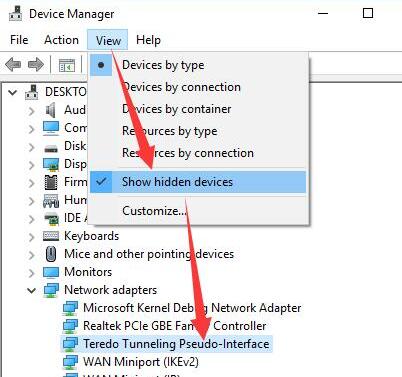
A Teredo relay must forward all of the data on behalf of the Teredo clients it serves, with the exception of direct Teredo client to Teredo client exchanges. Teredo relay The remote end of a Teredo tunnel.


Additionally, a Teredo server can be implemented in a fully stateless manner, thus using the same amount of memory regardless of how many clients it supports. A Teredo server never forwards any traffic for the client (apart from IPv6 pings), and has therefore modest bandwidth requirements (a few hundred bits per second per client at most), which means a single server can support many clients. Teredo server A well-known host used for initial configuration of a Teredo tunnel. Teredo clients are assigned an IPv6 address that starts with the Teredo prefix ( 2001::/32). Teredo defines several different kinds of nodes: Teredo client A host that has IPv4 connectivity to the Internet from behind a NAT and uses the Teredo tunneling protocol to access the IPv6 Internet. Routes traffic between Teredo hosts and native (or otherwise non-Teredo) IPv6 hosts.Encapsulates IPv6 packets inside UDPv4 datagrams for transmission over an IPv4 network (this includes NAT traversal).Assigns a globally routable unique IPv6 address to each host using it.Diagnoses UDP over IPv4 (UDPv4) connectivity and discovers the kind of NAT present (using a simplified replacement to the STUN protocol).The Teredo protocol performs several functions: As of IETF89, Microsoft plans to deactivate their Teredo servers for Windows clients in the first half of 2014 (exact date TBD), and encourage the deactivation of publicly operated Teredo relays. The temporary Teredo protocol includes provisions for a sunset procedure: Teredo implementation should provide a way to stop using Teredo connectivity when IPv6 matures and connectivity becomes available using a less brittle mechanism. In the long term, all IPv6 hosts should use native IPv6 connectivity. In effect, a host that implements Teredo can gain IPv6 connectivity with no cooperation from the local network environment. Thus, IPv6-aware hosts behind NATs can serve as Teredo tunnel endpoints even when they don't have a dedicated public IPv4 address. Teredo alleviates this problem by encapsulating IPv6 packets within UDP/IPv4 datagrams, which most NATs can forward properly. Many NAT devices currently deployed, however, cannot be upgraded to implement 6to4, for technical or economic reasons. In such a situation, the only available public IPv4 address is assigned to the NAT device, and the 6to4 tunnel endpoint must be implemented on the NAT device itself. However, many hosts currently attach to the IPv4 Internet through one or several NAT devices, usually because of IPv4 address shortage. ( September 2021) ( Learn how and when to remove this template message)įor 6to4, the most common IPv6 over IPv4 tunneling protocol, requires that the tunnel endpoint have a public IPv4 address.

Unsourced material may be challenged and removed. Please help improve this section by adding citations to reliable sources. The Teredo server listens on UDP port 3544. Christian Huitema developed Teredo at Microsoft, and the IETF standardized it as RFC 4380. Teredo should be disabled when native IPv6 connectivity becomes available. Teredo nodes elsewhere on the IPv6 network (called Teredo relays) receive the packets, un-encapsulate them, and pass them on. Teredo routes these datagrams on the IPv4 Internet and through NAT devices.

Teredo operates using a platform independent tunneling protocol that provides IPv6 (Internet Protocol version 6) connectivity by encapsulating IPv6 datagram packets within IPv4 User Datagram Protocol (UDP) packets. Unlike similar protocols such as 6to4, it can perform its function even from behind network address translation (NAT) devices such as home routers.
#Teredo tunneling adapter windows 10 full
In computer networking, Teredo is a transition technology that gives full IPv6 connectivity for IPv6-capable hosts that are on the IPv4 Internet but have no native connection to an IPv6 network.


 0 kommentar(er)
0 kommentar(er)
